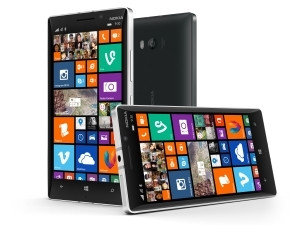
Microsoft recently sent me a Nokia Lumia 930 for a Windows Phone test. One of the company's reps had overheard me complaining about a particularly crufty Android device I was struggling with, and took the opportunity to try to convince me that Windows does in fact have a future in mobile phones.
I've written before that I think Windows is particularly well positioned to dominate in enterprise tablet environments, but I had been sceptical that it would find as strong a foothold on phones, for several reasons. One is its desperate lack of traction: up against Android and iOS, sheer inertia is against any newcomer, even one with technical superiority. Another is a lack of developers: a chicken-and-egg syndrome of the ISV community remaining loyal to the entrenched platforms. And a third is that I didn't really like it - Windows is suited to big-screen environments and the early attempts to build Windows into phones just didn't work for me at all.
Would the 930 convince me otherwise? I promised to give it a shot and offer an assessment of the platform and vision. This is not a review of the phone - you can find plenty of those online. It's a decent phone, good specs, and all I'll say is that I didn't actually have to force-kill any apps to fix performance glitches, which is not only a step up from previous Windows Phone experiences, it's also a welcome relief from the struggling Galaxy S4 that prompted this whole saga.
Windows 8.1, in its latest incarnation, is just about the final stop on the road to Windows 10. There have been some improvements in the point releases, but the next major OS version is where things are going to get interesting. I took delivery of the 930 immediately after the Microsoft Build event, armed with some insights of what was to come and the strategic direction the company is taking not only for this product, but for the entire ecosystem. I'll get to that in a moment, but first let's look at what's happening with the latest build of Windows Phone 8.1, codenamed "Denim".
Integ...ration
In a nutshell, the phone has some great features, but one major drawback. I'd like to see Microsoft focus on the flow of activity between apps, and the integration required to improve that UX. The individual apps are in many cases really good - often better than those I'm accustomed to on Android, but the flow needs urgent attention.
In a word, what's lacking is integration. From the trivial to the fundamental, the Windows Phone ecosystem appears to be characterised by great components unable to talk to one another. For a trivial example, consider that I can't, within the calendar app, click on the location of a meeting to launch the maps app. That's especially dumb, because Sunrise, which I consider to be the best diary app on Android, not only does offer that functionality, but is owned by Microsoft, and it's not available on the Windows Phone.
There are dozens of similar small instances, but the big ones are what matter. For a more fundamental example, consider authentication. Apps just don't appear to use the Windows built-in account management. At all! I can register my Facebook credentials in the OS, at which point Facebook details will appear in, say, the contact centre. But when I install the actual Facebook app, it won't leverage that preconfigured account; rather it requires me to log in again, retyping my username and password. Since I have very long, very complicated passwords, this is a real pain, and while LastPass is available on the platform, unfortunately it doesn't integrate to the same degree, with in-app authentication features, which it does on Android. So there's a lot of swapping back and forth, re-authenticating to LastPass, copying passwords, etc.

Most apps I use support "Sign in with..." federation, and on Android I'm accustomed to this just popping up a list of accounts they can use. Not so on Windows Phone, and that equates to two problems in one: firstly, because it's a usability pain; and secondly, because I don't want to have to give credentials to apps - I want them to get authentication tokens without any opportunity to capture my password. Even the ones that redirect to a Web sign-in screen to authenticate an app - there's still the risk that it's actually a password-stealing mimic.
Obviously, one answer is to avoid apps like this, but the problem goes deeper: some apps, lacking native support (like Asana, which I use for project management), don't have a Windows version yet. It's common then for some enterprising developer to code a wrapper for the Web version, add some additional smarts, and publish it as an app. There's zero chance I'm going to hand every developer and his app my central Google credentials, because there are a lot of shady apps in the Windows Phone app store.
And it goes deeper still, to the fundamental question of community support. "Sign in with..." is now pretty standard. And in fact I lean towards apps which support Google authentication because ITWeb is a Google Apps customer, so if I leave, the company can take over those apps with a minimum of fuss. Every day I see sites and apps offering to allow me to sign in with Google, with Twitter, with Facebook... not once have I seen a site offer me the facility to sign in with a Microsoft account. Microsoft has zero traction in this space, and as such, needs to massively improve the support for credential management and authentication in its platform - every user, on every app, is using a non-Microsoft credential, and it needs to work as smoothly as it does on Android or iOS.
I'd like Microsoft to do two things here. First, fix the credential manager and make sure developers understand how to use it properly. That'll catch up to the competition. But that isn't enough - merely being level is not going to win hearts and minds. So I'd like Microsoft to take a major step forward, and acquire LastPass or KeePass or an equivalent, established, password manager, and then bake that into Windows's credential manager, into the online Microsoft Account, but also into apps' and browsers' form-filling capabilities.
Above all, focus on integration and user experience.
I mentioned the pain of having to type in complicated passwords; that's partly because the standard onscreen keyboard is poor. It's good enough at basic stuff and if I didn't know better I'd probably put up with it, but I do know better and I won't settle for less. Having to swap screens to get to numbers and symbols, when they're accessible via a long press on Swype (my Android keyboard of choice) is slow and frustrating, for example.
What's especially annoying is that Windows doesn't allow third-party keyboards at all. The keyboard is rubbish, and I have no way to improve it. Every time I have to use it I'm going to experience that same frustration. Not only is that annoying, it's also a missed opportunity - allowing (nay, encouraging) those third-party keyboards to exist on a Windows Phone would massively ease the friction of swapping platforms. Sure, the interface and apps may be unfamiliar, but at least the primary input mechanism is the same. Swype could even pull down my custom dictionary from the cloud, so that really should be a seamless transition instead of a constant frustration.
The Windows Phone ecosystem appears to be characterised by great components unable to talk to one another.
One last point about integration: like most companies, ITWeb has fileservers that talk standard Microsoft protocols. I have a server at home that does the same. You'd think support for SMB networking would be a standard part of the Windows Phone stack, since basically every enterprise user is going to need it, but no. You need a third-party app (a flaky, potentially credential-stealing third-party app) to get your Windows Phone to talk to a Windows fileserver.
Come on Microsoft, try a little harder. I'm not even going to talk about print support.
At this point, my impressions of the ecosystem are mixed. The phone's features and the individual apps are polished and solid, often surprisingly so, but the overall integration is lacking. For the second half, I'll delve into business apps, the productivity ecosystem, the developer community, and the future strategies of Windows 10 and Microsoft as a whole.
Stay tuned!
Share